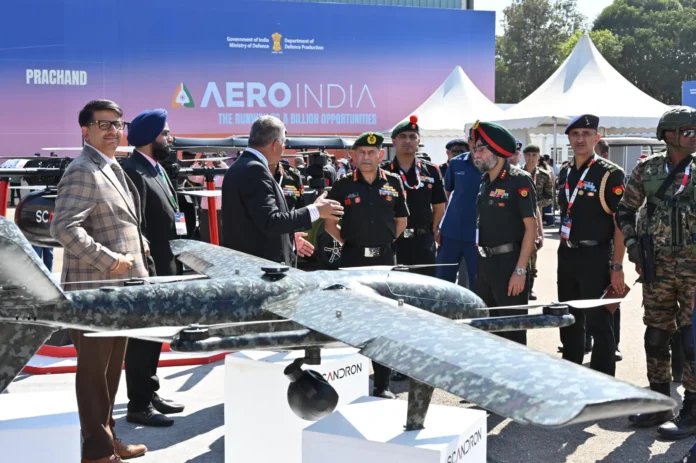New Delhi [India]: Chief of Army Staff (COAS) General Upendra Dwivedi highlighted India’s increasing indigenous production capabilities, particularly in the field of drones, and reiterated the goal of achieving 100% self-reliance in defence equipment manufacturing, even if it takes time.
“India follows Vasudhaiva Kutumbakam—the world is one family. This and Atmanirbharta (self-reliance) must go hand in hand. Our ultimate desire is to have 100% equipment production in India, but it doesn’t have to happen immediately. It can take three, five, or even ten years,” he said in an exclusive interview with ANI.
Boosting Indigenous Defence Production
Gen Dwivedi acknowledged that while some equipment is still sourced from abroad, efforts are being made to develop alternatives within India.
“As of today, there are 40 companies in India producing loitering munitions, and approximately ₹900 crore worth of equipment has been procured. When conducting research and development, production costs are also factored into sale prices,” he explained.
He emphasized that critical components are currently being imported under strict security protocols but added, “Over time, we are actively working on producing these components domestically.”
Success in Indigenous Weapon Systems
In a significant milestone for India’s indigenous defence industry, the Indian Army received 480 loitering munitions from a Nagpur-based firm in December 2023. The Nagastra-1, developed by Solar Industries, has over 75% indigenous content.
Loitering munitions, a type of unmanned aerial vehicle (UAV), can target enemy tanks, equipment, and personnel while also aiding in reconnaissance missions.
“For example, if a hill obstructs the view, you can launch the loitering munition, which will cross over, locate the enemy tank, and then strike the designated target,” Gen Dwivedi explained.
Agniveer Scheme and National Security
Gen Dwivedi reaffirmed the Agniveer scheme’s effectiveness in shaping disciplined and responsible citizens.
The Agnipath scheme, launched on June 15, 2022, recruits young aspirants between 17.5 to 21 years into the armed forces for four years, with 25% retention for extended service.
He dismissed the idea of reviving a reservist system, stating that the Agniveer model is more effective.
“Earlier, we had a reservist system, but it didn’t work as expected. Now, under Agniveer, recruits undergo training for four years and become available for other roles. The Home Minister has stated that many Agniveers will be absorbed into Central Armed Police Forces (CAPFs) and state police forces. It’s an add-on to the existing structure,” he said.
Evolving Warfare and the Role of AI
Discussing the evolution of warfare, Gen Dwivedi outlined five generations of combat—from trench warfare to AI-driven cyber warfare.
“We must prepare for all five generations of warfare. Traditional methods, such as machine guns and artillery, will not disappear, but AI, quantum computing, and cyberspace will play an increasingly crucial role. The younger generation will be instrumental in this transition,” he noted.
He also stressed the importance of securing rare earth minerals, essential for semiconductor production.
“If rare earth minerals remain monopolized, denial of access will weaken our fighting capabilities. Like-minded nations must collaborate to ensure fair trade in this sector,” he said.
AI and Digital Transformation in the Indian Army
The Army Chief also discussed the force’s adoption of Artificial Intelligence (AI) to streamline communication with veterans and Veer Naris (war widows).
He introduced SAMBANDH, a customized bilingual WhatsApp-based chatbot, designed for one-on-one communication, grievance redressal, and information dissemination.
“Data is crucial in AI-driven decision-making. We are integrating data across various headquarters, enabling predictive analysis for better strategic planning,” he added.


